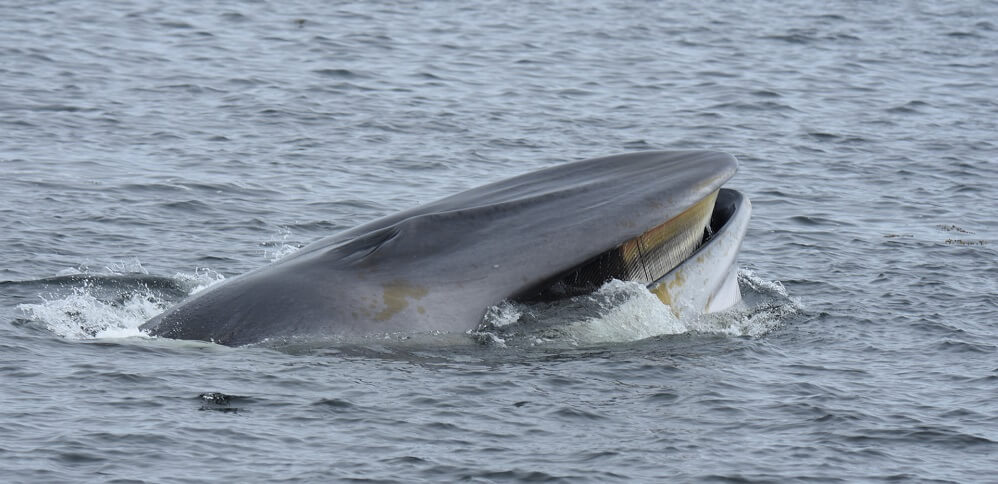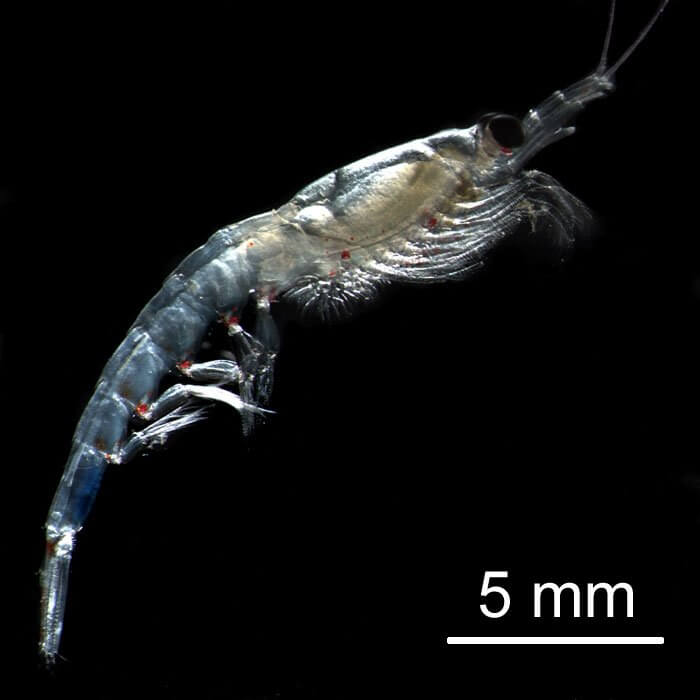As predators, fin whales are considered generalists, capable of hunting and feeding on a variety of prey ranging from zooplankton to fish. However, they also sometimes specialize in certain key resources by focusing on a very small number of prey. Both types of feeding behaviours exist, but for several years there has been an increase in the proportion of generalists in the fin whales that frequent the St. Lawrence Estuary. According to a study conducted by researcher Jory Cabrol of the Maurice Lamontagne Institute and his team, this trend may be linked to climate change and dwindling resources.
“Atlantification” of northern waters
The waters in which fin whales live are currently undergoing a steady rise in temperature, in addition to a significant decline in ice cover. As a result, polar species that are less tolerant of this warming are shifting north, giving way to southern temperate species that can better withstand higher temperatures. This phenomenon is called the “Atlantification” of northern waters. These environmental changes started to have a visible impact on the Estuary and Gulf of St. Lawrence in 2001, but the more extreme weather episodes truly commenced in 2010 and continue to this day.
Generalist trend
The impacts of the Atlantification of the St. Lawrence are particularly acute in a key prey of specialist fin whales: arctic krill. This species requires a cold environment to thrive, and the rising temperatures of the St. Lawrence are proving detrimental to its survival and reproduction. Arctic krill are therefore thought to be less and less abundant in these waters, as opposed to northern krill, which are more tolerant of these new environmental conditions.
It is suspected that less arctic krill means more competition between fin whales for food. After collecting samples, Jory Cabrol and his colleagues analyzed the stable isotopes of carbon and nitrogen present in the skin of St. Lawrence fin whales, as well as fatty acids in their adipose tissue. They found that in response to ecosystem changes, including prey availability, fin whales’ diets are changing. On average, the St. Lawrence population is believed to have opted for a more generalist foraging behaviour than before. There would therefore be a lower proportion of individuals specializing in arctic krill, which would limit not only intraspecific but also interspecific competition for the consumption of this prey. The same phenomenon was also observed in fin whales specializing in herring and capelin. The current trend described in the study is testimony to the fin whale’s fairly good ability to adapt to a significant disruption in its food resources.
Nevertheless, it is still too early to be proclaiming victory for our giants. The trend toward a more generalist diet does not eliminate the presence of specialists, since tremendous variability remains between individuals. Moreover, Jory Cabrol notes that it is important to bear in mind that “Fin whale management and conservation efforts are much less effective if we focus only on population levels. Behaviour varies too widely from one individual to another to not take this into account.” With this study, it is also impossible to determine what the long-term effects of these dietary changes will be, both on the resources and on fin whale populations in the Estuary.
Prey stocks still poorly known
Arctic krill and copepods are the fin whale’s favourite quarry, but its menu spectrum also includes capelin, herring and sand lance. However, little information exists on the abundance of these species. The difficulty in sampling these prey is likely one of the main reasons for this lack of data. Sampling in the marine environment is a complex task due to the vagaries of the weather and the limitations of fishing gear and traps. In addition, certain species have their own challenges. For example, sand lance live on the seabed, making them difficult to reach and therefore to sample. Unfortunately, this lack of knowledge of prey stocks is hampering whale conservation efforts.







